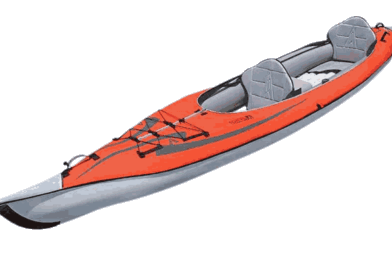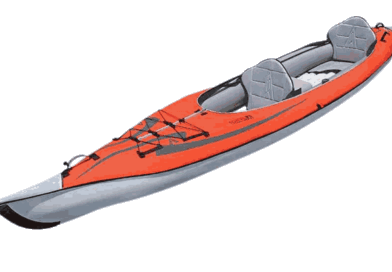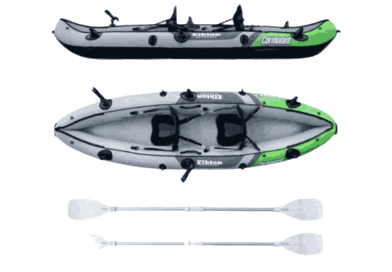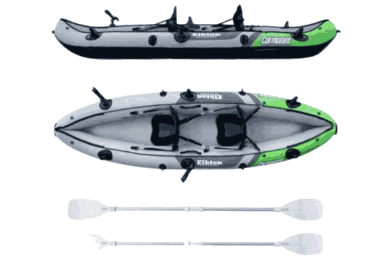What Are the Properties of a Kayak? – Answering FAQs
Kayak 101: Everything You Need to Know About This Iconic Watercraft
Are you a water enthusiast looking for a thrilling adventure? Then you must have heard of kayaking!
This unique watercraft has been around for centuries and has been used for various purposes, from fishing to transportation. But what exactly makes a kayak stand out from other boats, and why is it so popular among ocean lovers?
In this article, we will delve into the characteristics, properties, and durability of kayaks. We’ll also explore the differences between kayaks and canoes and answer some of the most commonly asked questions about this fascinating watercraft.
So, without further ado, let’s dive into the world of kayaking!
Table of Contents
What are the Characteristics of a Kayak?
Imagine your favorite racing car. It’s sleek, right? Just like that, a kayak is slim and covered on top to protect you from water. Some kayaks are like convertible cars where you can sit on top with your legs out. These are called sit-on-top. Sounds like fun, doesn’t it?
Next, we’ll look at what are the properties of a kayak. Get ready to paddle through!
What are the Properties of a Kayak?
Let’s imagine a kayak like a superhero’s super-speedy boat. It’s pointed at both ends and has no keel, like a belly of a boat. It’s mostly covered with a small area, called a cockpit, where you sit and paddle. Just like Batman rides alone in his Batmobile, most kayaks are built for one person but some are big enough for two or even three!
As we sail through these amazing facts, let’s paddle towards our next topic and discover what makes a kayak suitable for the vast, open ocean.
What Makes a Kayak Suitable for Ocean?
Imagine a superhero suit. It has to be ready for all conditions, right? Same with an ocean kayak! It’s got special ropes to keep your gear secure, a big enough cockpit for a spray skirt (like a shield against water), and a rudder or skeg (like a superhero’s navigation tool) to help you steer in wind and seas.
Sounds like an exciting adventure, doesn’t it?
From superhero kayaks, let’s find out how tough these vessels are in our next section!
How Durable is a Kayak?
A kayak is like your favorite superhero action figure; with some care, it can last for a long time, even more than 10 years! But, just like your action figure fades if left in the sun, kayaks can also get damaged by sunlight. So, always remember to store them in a cool, shady place after your water adventures.
Ever wondered what gives kayaks their super strength? Join us in the next section to find out what they’re made of!
What Plastic is a Kayak Made of?
Have you ever wondered what your kayak is made of? Just like your superhero action figures are made of plastic, most kayaks are also made from a plastic called Polyethylene. It’s strong, just like your action figures, and light enough to float on water!
But remember, like all plastics, it’s important to take care of our kayaks to keep the earth clean and green!
Speaking of adventures, let’s head on to the next section to find out how these exciting vessels are built!
How are Kayaks Built?
Making a kayak is like building a cool fort with your LEGO blocks! First, a special kind of plastic is heated until it’s soft and gooey, then it’s shaped into a kayak using a huge mold – kind of like how you use a mold to make a sandcastle. Then, it cools down and becomes solid again.
Just imagine if your LEGO blocks were as big as a kayak! (Source: Jackson Kayak)
What if I told you there are holes in a kayak? Scared? Don’t be! Let’s find out why in our next exciting section.
Why are There Holes in a Kayak?
Holes in a boat? Sounds as odd as having holes in your water balloons, right? But in a kayak, these special holes, known as scupper holes, are there for good reasons. They give strength to the kayak and also act like a drain if water gets in, much like the drain in your bathtub!
So, no worries, these holes won’t let your kayak sink!
Up next, we’re going to revisit a question that might have left you wondering. Can a plastic kayak sink? Let’s sail towards our next section to find out!
Can a Plastic Kayak Sink?
You’ve seen your plastic toys float in your bath, haven’t you? Similarly, plastic kayaks are designed to float and not sink easily. They’re light and well-balanced, just like your rubber duckie! However, just as your toys can flip over if you push them, a kayak can also tip over if not handled properly. (Source: REI)
But how deep can a kayak? Get ready to dive into the depths in our next section!
How Deep is a Kayak?
The depth of a kayak is like the height of your school backpack, usually between 13 and 15 inches. This depth keeps you secure and comfy while paddling, just like when you’re snuggled in your favorite blanket!
From kayaks, let’s paddle over to their close relatives – canoes. Ready to spot the differences? On to the next section!
What are the Two Main Differences Between a Canoe & a Kayak?
Remember the story of the quick hare and the steady tortoise? Well, a kayak is like the hare—fast and agile with its lightweight body and two-sided paddle. A canoe is like the tortoise—slower but more stable and hard to tip over.
So, whether you want to race like the hare or cruise steady like the tortoise, there’s a water ride for you!
Let’s keep paddling to our next section where we’ll discuss more about these two water gliders!
What are the Characteristics of Kayak and Canoe?
You know the difference between a bike and a tricycle, right? It’s kind of like that with kayaks and canoes. In a kayak, you sit down and use a two-sided paddle, like pedaling a bike with both legs at the same time. In a canoe, you kneel and paddle with one side at a time, much like how you’d push off the ground on a scooter.
Interesting, isn’t it?
For our final voyage, we’ll uncover why kayaks are filled with foam. Curious? Paddle on to the next section with me!
Are Kayaks Filled With Foam?
Kayaks have foam inside them, much like the squishy stuffing inside your teddy bear. This foam is super important because it helps the kayak stay afloat, even if it gets a crack or a hole. It’s like when you wear your floaties in the pool, they help you stay afloat, right? The foam in the kayak does the same job!
So, just like you never take off your floaties in the pool, never take out the foam from a kayak. (Source: American Canoe Association)
Wow, we’ve explored so much about kayaks today! There’s always more to learn, so stay curious and keep asking great questions!
Frequently Asked Questions:
What materials are kayaks typically made of, and how does this impact their durability and suitability for different bodies of water?
Kayaks are typically made of materials such as plastic, fiberglass, carbon fiber, and wood. The choice of material impacts their durability and suitability for different bodies of water. For example, plastic kayaks are more durable and suitable for calm waters, while fiberglass and carbon fiber kayaks are better suited for rougher waters.
How are kayaks constructed, and what are some of the factors that go into determining their weight, size, and overall performance?
Kayaks are constructed through various methods such as rotomolding, fiberglass layup, and thermoforming. Factors such as the choice of materials, shape, and size impact their weight, size, and overall performance. For example, a longer and narrower kayak will be faster and more efficient, while a wider kayak will be more stable.
What are some of the key differences between kayaks and canoes, and how do these impact their intended uses and overall functionality?
Kayaks and canoes differ in their shape and design. Kayaks are typically narrower and have a closed cockpit, while canoes are wider and have an open deck. These differences impact their intended uses and overall functionality. Kayaks are better suited for solo paddling and maneuvering through rough waters, while canoes are better for tandem paddling and carrying more gear.
Are there any special maintenance or care requirements that kayaks require in order to maintain their performance and prolong their lifespan?
Regular maintenance and care are necessary to prolong the lifespan and maintain the performance of kayaks. This includes cleaning, storing properly, and inspecting for damages.
How do different design features, such as the presence of holes or the shape of the kayak's hull, impact its performance in different water conditions and environments?
Design features such as the presence of holes or the shape of the kayak’s hull impact its performance in different water conditions and environments. For example, a kayak with a V-shaped hull is better suited for choppy waters, while a flat-bottomed kayak is better for calm waters. Holes or scuppers in the kayak’s hull help drain water and prevent the kayak from sinking.
What Can You Do Now?
Now that you know more about kayaks, why not take the plunge and try one out for yourself? If you’re in the market for a new kayak, check out our review of the best kayaks for under 1000 dollars on the market.
Now that we’ve covered the basics of kayaks let’s dive deeper into the logistics of kayaking. Are you curious about the best position for kayaking or whether or not a 300-pound person can fit in a kayak? Head over to our next article to find out the answers to these questions and more.




